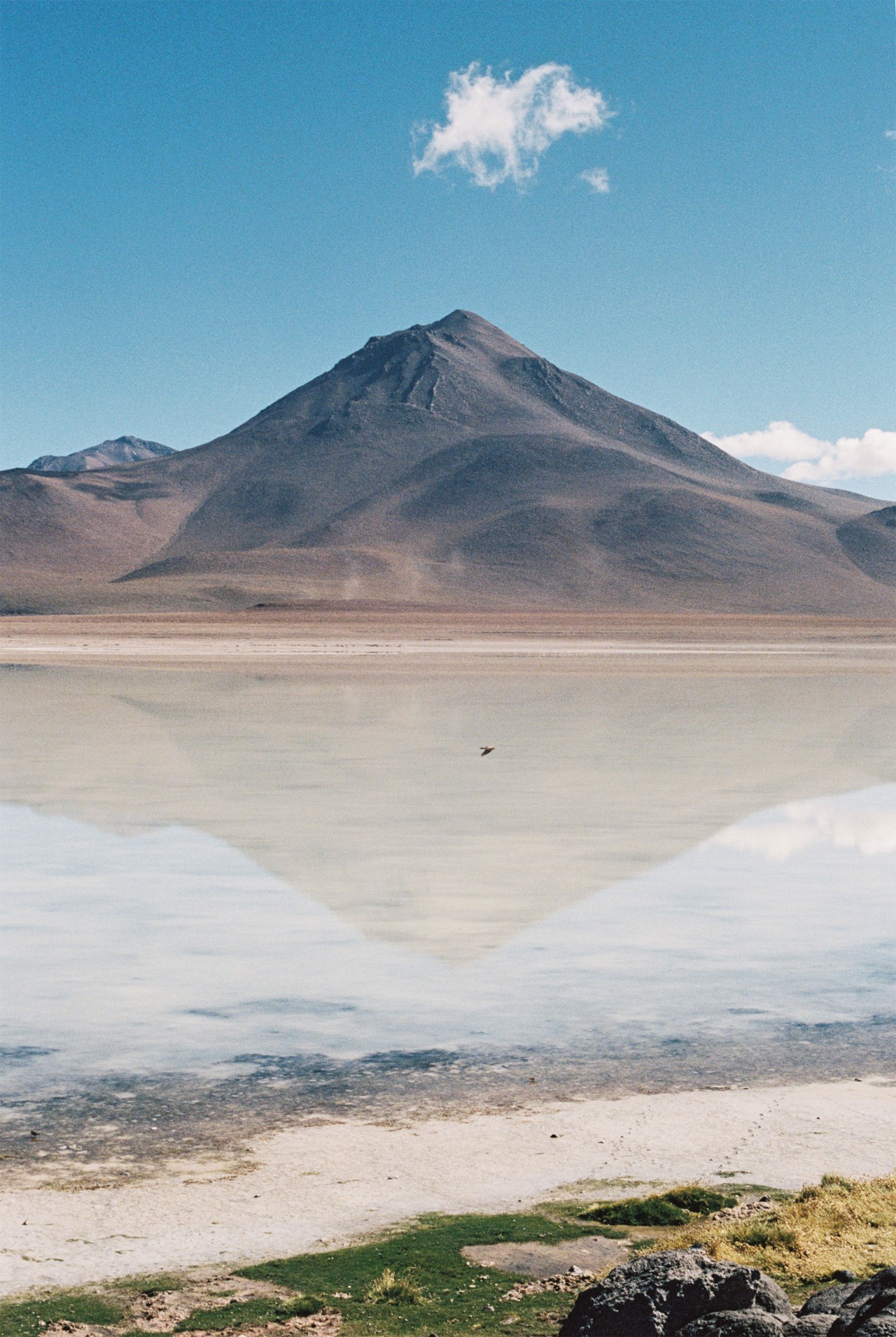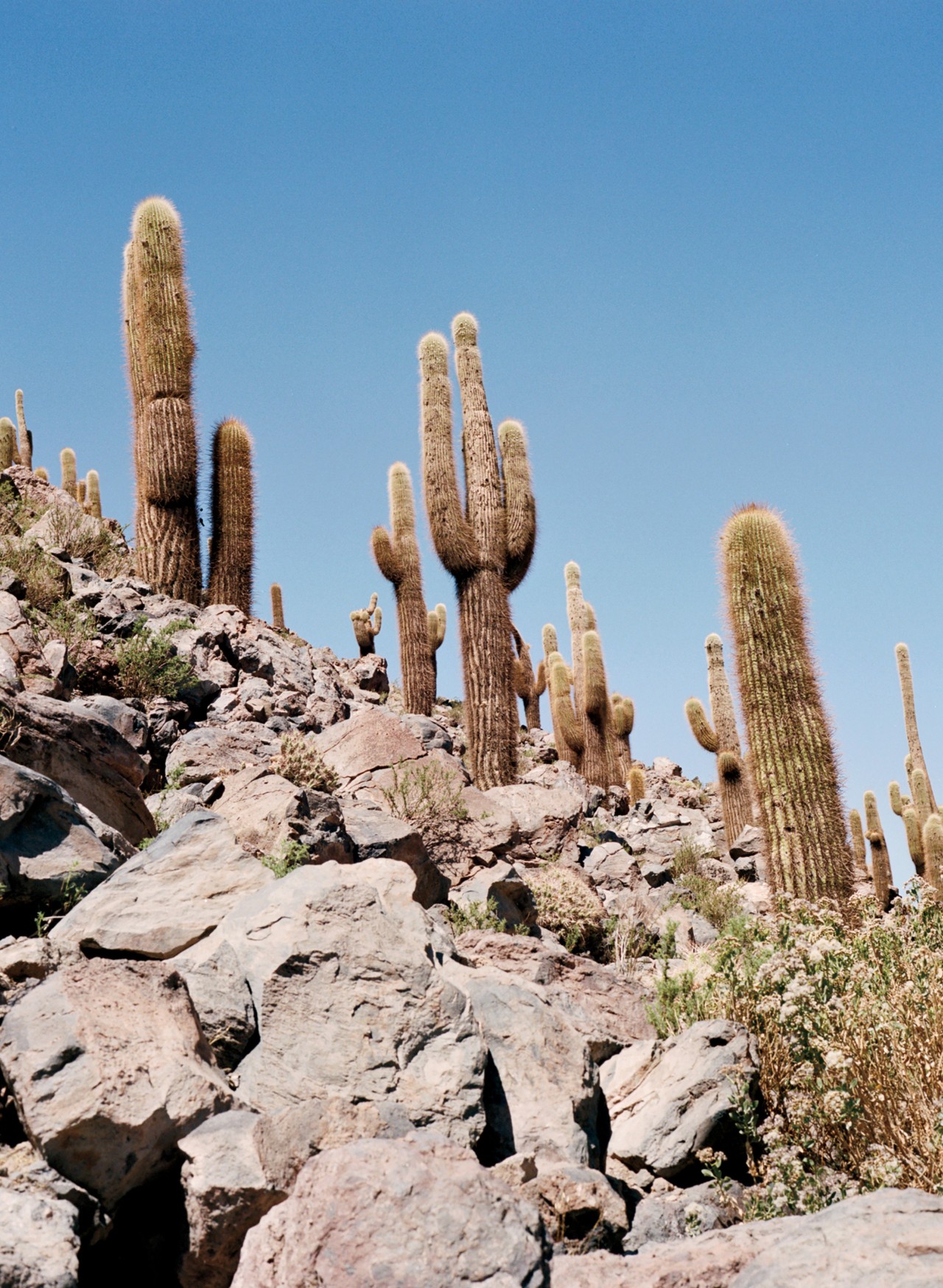

The images for this story originally appeared in Atmos Volume 02: Latitude. The Atacama desert in Chile is one of the driest places on Earth and yet is rich with biodiversity.
Words by Khaled A.
photography by jess gough
Menna Agha’s childhood in tahgeer was filled with her grandmothers’ stories. These stories were not just ways to pass the time. They were world-building, life-affirming, because the matriarchs in her family were her only gateway to her ancestral land: Nubia. “We’re a generation that is displaced from what we’ve never seen,” Agha told Atmos. “There [is literally] no way I can see this land. [All I can do] is take a boat on a vast body of water, only to be told that my land lies underneath.”
In each of her grandmother’s stories, Nubia was a paradise. And Agha believed it to be so. But at high school—and later during her graduate studies—she learned that, to others, Nubia was just desert.
Located alongside the Nile river, Nubia is split between current-day Egypt and Sudan. For centuries, it was home to many empires, tribes, and communities, including Agha’s family. But in the early 20th century, British campaigns pushed for the construction of dams in the Nile as a way of supplying irrigation canals. With every new dam, parts of Nubia were left flooded, submerging large swathes of agricultural land and destroying the local economy in the process. By the 1960s construction finished on the High Dam in Aswan, which in turn submerged the entirety of Nubian land within Egypt and displaced Agha’s family alongside 100,000 Nubians from their ancestral land to tahgeer—otherwise known as: the place of displacement.
As Agha started researching the history of Nubia, she noticed a disconnect between the words used by British anthropologists and German Egyptologists to label Nubia a desertscape, and the testimonies of older Nubian women who had lived in the region. Agha knew her people were of the sand and sun, but within the ecological definitions of this ecosystem, Nubia wasn’t a desert. In fact, there is no word for “desert” in Nubian.
That this intentional mislabeling of her homeland had never been contested prompted the question: how do some ecosystems become known as “deserts”—and who does this marker serve?
Deserts have historically been portrayed as arid, inhospitable, and uninhabitable. Despite being home to many civilizations and incredible biodiversity, colonial narratives have yet to expand beyond depicting the desert as a site of inherent emptiness. On maps, journal entries, and even treaties, no desert—nor any form of life inhabiting it—has escaped the violent assumptions of desolation; a desolation that is then used to justify extractive colonial projects. In Deserts Are Not Empty, anthology editor Samia Henni describes how “exploitative authorities are constantly searching for and in need of so-called ‘empty’ places to be ‘filled’ through occupation, extraction, mining, production, and accumulation.” This, in short, is the modern history of deserts.

“Nature is not this inert, passive object of appropriation. It’s a subject with its own agency.”
One example of such exploitation is how deserts have been used to detain, obscure, and conceal incarcerated people. Professor Brahim El Guabli reckoned with this exploitation for the first time when he learned of Tazmamart, a secret prison in the desert of southeast Morocco close to the Algerian border. A native of Ouarzazate, southeast of the Atlas mountain range, which separates the Sahara from the Mediterranean sea, El Guabli was troubled by the carceral uses of the desert areas close to his hometown. “I am a child of the desert,” he said. “My most important connection to the desert is it being my home. It is where I grew up, went to school, and lived most of my life. My connection to the desert is both a connection to land and a position in the world.” Subjugation has no place in the land on which El Gaubli was raised.
Incarceration was just one of many oppressive projects that have taken place in the desert. El Guabli is currently working on a second book tentatively titled Desert Imaginations: Saharanism and its Discontents in which he grapples, among other things, with the French Army’s long history of testing various weapons and technologies in the Sahara. In the 1960s, General Charles Ailleret, the head of the nuclear program in France, described the Sahara in Algeria as “a land of thirst and fear, from which all forms of life [were] reputedly absent,” and in turn justifying the testing of atomic bombs. These tests subsequently made it impossible for vegetation native to the Sahara to grow for decades. Other plants were permanently eliminated.
An ecosystem doesn’t even have to be what is widely understood to be a “desert” for it to be exploited. Rather, what is routinely targeted is a space’s alleged emptiness; its constructed nothingness. This is what researcher Paulo Tavares learned about the Amazon rainforest in Brazil where diverse ecosystems were described as “deserts” by colonial administrators and elite Brazilian naturists because they were considered empty of “civilization”. Tavares put this down to the West’s obsession with commodifying and controlling nature—and not realizing that “nature is not this inert, passive object of appropriation,” he said. “It’s a subject with its own agency.”
Similar to the false claims made against deserts, the Amazon is robust with life.
In his work, Tavares has recorded the ongoing struggle against accusations of Amazonian emptiness. For instance, when the military dictatorship that governed Brazil tried to develop the Amazon after World War II, Indigenous communities shaped the fight to overthrow the government and establish a democracy. The movement won by chronicling the many memories and histories that saturated the Amazon, undermining narratives of Amazonian nothingness and leading to the recognition of the Amazon as a protected ancestral territory in Brazil’s new democratic constitution of 1988.

“The racialization of the desert is only a facade for the systematic vision or fantasy towards Arabia.”
Industrializing the desert was also an ongoing project in Egypt where almost 96% of the country is considered a desert. Following their displacement, Agha and her family had to move from tahgeer to 6th of October City, a small city and neighborhood in the Greater Cairo Region—which is also known as “a city in the desert.” She remembers the songs she heard on TV, on the radio, and in the streets as part of a campaign to “green the desert,” the facade that covered the industrialization process:
عايزينها تبقى خضرا
الأرض اللي في الصحرا
ونقدمها لمصر هدية
حاجة جميلة ومعتبرة!
We want it to become green
The land in the desert
So we can gift it to Egypt
What a beautiful gift!
Like other Nubian families, Agha’s family knew they were being moved to yet another site the government designated for sacrifice. Nubians resisted these waves of displacement primarily through protests, and by refusing to leave their homes behind. Most recently, such protests were carried out to halt the construction of the Sudanese-Kajbar dam in 2007—this led to the killing of four Nubians by police, who injured 20 more. The songs have become forms of resistance that persist for over 60 years; Agha describes singing them as “a ritual of remembrance,” she said. “It’s the emotional work that we have to do to sustain our conceptualization of ourselves and not cede ground to this project of assimilation and dissolution.”
Agha is not alone in refuting the narratives of desert as empty, inhospitable spaces. Writer Jood AlThukair has used the poems of her Najdi foremothers as a tool to “write back” against Orientalist records of the Arabian Peninsula. Deserts were not foreign to her—they were part of her everyday surroundings in Riyadh and Unayzah, just like the sky and the sun. But she attributes the discourse around emptiness to “the desert [being] the first victim, it’s an amalgamation of predetermined notions placed on the Arab body,” she said. “The racialization of the desert is only a facade for the systematic vision or fantasy towards Arabia.” To push back, she found poems that meticulously described the people, animals, and rituals that have thrived in the desert. AlThukair is set on maintaining “a tender gaze” of the desert that refutes dangerous threats of emptiness.
This tender gaze is what has kept the landscapes—and memories—of Nubia alive and well-documented in the stories, songs, and poems Agha grew up with. It’s a gaze that offers proof that deserts are populated with histories and traditions—and with all forms of life. To Agha, and the communities she’s grown up with, deserts, and everything they represent, are anything but empty.
A Mirage of Emptiness: Why Deserts Were Reduced to Nothing

